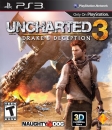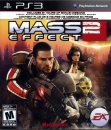Salnax said:
WORK IN PROGRESS!!!!!!
Timeline
- 1983 - Famicom launched in Japan during July with a few Nintendo launch titles. Nintendo attempts to make a deal with Atari to sell the Famicom in America under the Atari brand, but Atari refuses.
- 1984 - After over a year on the market, the Famicom gets its first 3rd party titles from Hudson. By the end of 1984 though, Hudson and Namco are the only third parties supporting the Famicom. Despite this, the Famicom had sold over 2.5 million units in Japan by this point, mostly due to Nintendo games like Donkey Kong, Mario Bros, and various sports games with generic names like "Golf."
- 1985 - This year was huge for Nintendo. Third parties like Jaleco, Taito, and Konami started releasing games for the Famicom. Big third party games included Bomberman, Dig Dug, and 1942. However, this was also Nintendo's best year yet for development, with Balloon Fight and Ice Climber coming out in Q1, Wrecking Crew in Q2, and Gyromite and Super Mario Bros(!) latter in the year. Meanwhile, the NES has limited release in NYC, with an estimated 18 games. Super Mario Bros was a launch title outside of Japan, giving Nintendo early dominance that generation.
- 1986 (West) - NES launched across the West. In order to prevent another 1983 style crash, Nintendo establishes firm control over their console, locking out unlicensed games and limiting how many games a company could release on the NES per year. Note that this was during an era where games media as we know it was minimal at best; even de facto infomercials like Nintendo Power would not exist for a couple of years. However, few companies were able to release NES games in 1986 other than Nintendo, Bandai, and Capcom, leaving Nintendo with the bulk of the marketshare. Nintendo's monopolization policies also started around this era, partially due to the fact that as both a hardware and software company, third parties competed with their own software when released on the NES, meaning they had better neither help sell hardware or get kicked out of the deal. Note that the competition at the time consisted of the Sega Master System and Atari 7800, which lacked high quality exclusives to sell themselves with.
- 1986 (Japan) - Back in Japan, remaining third parties finally jumped on board the Famicom, but it was a bit late. Nintendo released their Famicom Disk System add-on, allowing for cheaper re-releases of their older games and new games that could save data. Disk System games included The Legend of Zelda, Super Mario Bros 2 (Lost Levels), Metroid, and Kid Icarus, giving Nintendo plenty of hardware and software sales that year. Enix also released Dragon Quest this year.
- 1987 (West) - This was a good and bad year for third parties. On one hand, more companies, including Western developers, released more games which sold better. On the other hand, most of these were overshadowed by Nintendo's own releases, which included last year's Disk System games from Japan and Punch-Out. This created a weird dynamic where a third party's biggest competitor, Nintendo, was also necessary for their survival. Third parties would spend the larger part of a decade looking for ways to break out of this system.
- 1987 (Japan) - The Disk System was used for a number of games from 1986 to 1988 before the problems of limited storage and piracy killed the peripheral. Meanwhile though, the Disk System aided the Famicom in dominating the market, supporting games like Zelda 2 and various third party titles. Note that the third party games for the Disk System were cheap to make, but required players to own a bunch of Nintendo hardware first. Other than Nintendo's Zelda 2 and sports games, third parties released Dragon Quest 2 and Final Fantasy, which would be big Nintendo exclusive series into the mid-90's. Also note that the more advanced PC Engine, aka the TurboGrafx-16, was released in October by NEC and Hudson. Hudson supported NEC in this endeavor after Nintendo didn't accept their plans for a graphics chip. It would find some success in Japan, but was limited by a lack of support aside from Hudson itself, keeping it from ever threatening Nintendo's interests.
- 1988 (West) - Super Mario Bros 2 (the one with Shy Guys and Birdo) and Zelda 2 keep the NES healthy in America
- 1988 (Japan) - Super Mario Bros 3 and Dragon Quest 3 happened. The Sega Genesis was also released, but since Super Mario Bros 3 had come out a few days earlier, nobody cared. Because who cares about Altered Beast anyway? Remember, Sonic was released in mid-1991, so the Genesis had trouble finding success before then.
- 1989 (West) - The Genesis and Turbo-Grafx 16 are released. Neither have great starts, though the former does better
- 1989 (Japan) - Nintendo support for the NES is minimal, due to a shift to the Game Boy and upcoming SNES. This gives third parties a chance to fill the void, but they are largely forced to do so on the Famicom. They still also have to compete with the large number of already-existing Nintendo games stretching back six years. On the Game Boy, Nintendo's Tetris and Super Mario Land are big hits, and become some of the best-selling games of all time in Japan. Final Fantasy Legend also did well, but it is obvious that Nintendo will control its handhelds like its consoles.
- 1990 (West) - Super Mario Bros 3 was released. So the NES still had some life left. That said, it was starting to show its age, especially as the Genesis slowly gained hits games. Note that many Genesis games were adaptations of non-gaming people and IP's, such as Michael Jackson, John Madden, and Mickey Mouse. Also note that Electronic Arts, a PC publisher that had recently entered the game market, was behind a few Genesis games, including Joh Madden Football. This was an early indicator of Western developers and publishers, especially those used to the freedom offered by the PC gaming market, shunning Nintendo in favor of any other viable competitor.
- 1990 (Japan) - Nintendo finally goes 16-bit, launching the Super Famicom, aka the SNES. Though the launch library is small, Super Mario World gives the platform a definitive game immediately, while Pilotwings and F-Zero give it a technological showcase. Though Final Fight stands out, it seems that Nintendo will dominate the next generation as well. 3rd party support for the Famicom continued with Dragon Quest 4, Mega Man 3 and Final Fantasy 3 this year, taking advantage of the large userbase and lack of competition from Nintendo itself.
- 1991 (Intermiession) - Makers of gaming hardware knew a bit about the future of their industry at this time. The CD-ROM had been invented and standardized by the late 80's, and it became clear to most experts that they were going to be an important piece of technology in gaming. The standard 12 cm disc could hold somewhere around 750 MB. In contrast, Super Mario Bros took up about 0.03 MB of space, the largest NES cartridge ever made for widespread use was limited to about 1 MB, and even the SNES and Genesis cartridges could never hold more than around 16 MB. Nintendo had been considering the new tech as early as 1986, after both benefits and flaws with the Famicom Disk System became apparent, planning a possible add-on with Sony. Sony's "Play Station" add-on for the SNES was shown off in May 1991... one day before Nintendo announced that they were working with rival company Phillips instead. Nintendo executives had been worried that their existing contracts with Sony woud put them at a disadvantage by essentially giving rights to all games made for the "Play Station" to Sony rather than Nintendo. The partnership with Phillips, in contrast, only required Nintendo to let those YouTube Poop games to be made by an outside company. Norio Ohga, Sony's legendary CEO, was somewhat miffed about having his company shamed on an international stage, and considered working with Sega to make their next console. Sega rejected this offer, which meant that Ohga would have to find revenge some other way. Sony saw the success of early 3D games like Virtua Fighter, decided that was the future, and combined 3D-based tech with the CD-ROM and their years of research involving the industry to create the original PlayStation, released in Japan in December 1994. And that's how suspicious and vindicative Japanese businessmen created gaming as we know it.
- 1991 (West) - Sonic the Hedgehog is released for the Genesis. Though not a huge success in Japan, it is the biggest new series in console gaming since Super Mario in the West. Along with games like Streets of Rage, Golden Axe, and ToeJam and Earl, as well as EA games like James Pond, PGA Tour Golf, NHL Hockey, and Marble Madness, the Genesis is well positioned to compete with the SNES. The SNES is not necessarily panned when released a few months after Sonic the Hedgehog, but where the SNES had yet another Super Mario game and some pseudo-3D titles, the Genesis seemed to offer something Nintendo could not match. Blast Processing and whatnot. Note that the SNES was more powerful than the Genesis in most respects, including RAM and sound quality, but did in fact have trouble with games featuring movement as fast as in the Sonic series. The fact that the NES would still be supported with games, both by third parties and Nintendo, also sabotaged the SNES.
- 1991 (Japan) - While Nintendo had reasons to worry in the West, they were doing as well as ever in Japan. Nintendo games like Link to the Past were quite successful, third party series like Final Fantasy continued where they left off on the NES, and the Game Boy got new games like Final Fantasy Adventure, Yoshi, and Metroid II. Sega released an add-on for the Genesis to let it play CD's, hinting at the eventual replacement of cartridges in a few years.
- 1992 (West) -
- 1992 (Japan) -
- 1993 (West) - 3DO
- 1993 (Japan) -
To be continued...
|




















































